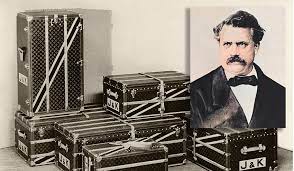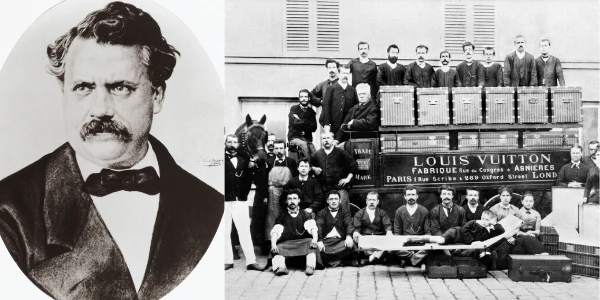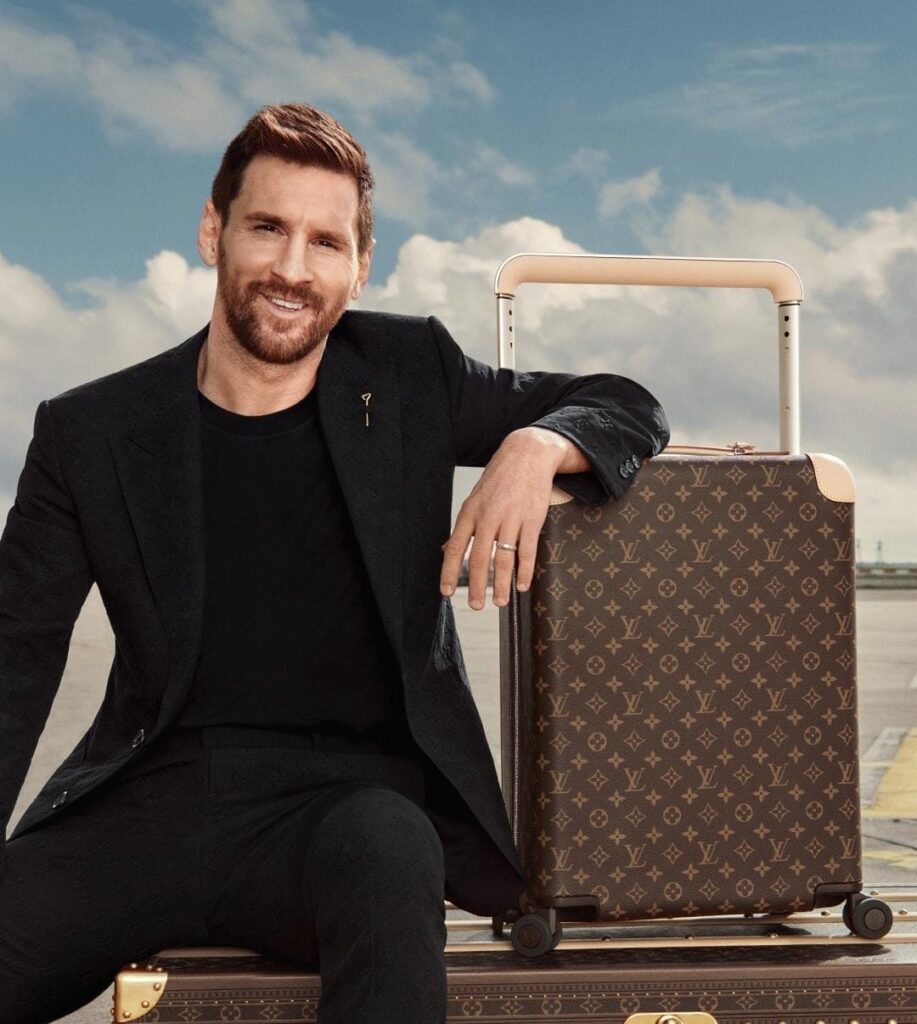Introduction:
Louis Vuitton is a name that resonates with a legacy associated with luxury, sophistication, and success. As one of the world’s most iconic luxury brands, Louis Vuitton has successfully maintained its position at the pinnacle of the fashion industry. From its humble beginnings as a trunk maker to becoming a symbol of wealth and exclusivity, the brand has a remarkable history. This article explores the origins of Louis Vuitton, its struggles during World War II, and how it ascended to become the number one luxury brand for the elite.

History of Louis Vuitton:
The History of Louis Vuitton Louis Vuitton’s journey began in 1821 in Anchay, France, where he was born. At 16, he moved to Paris to learn from Monsieur Maréchal, a well-known trunk maker. This apprenticeship taught him to craft top-notch travel trunks, a skill that would shape his brand’s future. Louis Vuitton opened his own workshop in Paris in 1854. He focused on making strong and stylish travel trunks. His biggest breakthrough was creating flat-top trunks. These were easier to pile up and move around than the old dome-shaped ones. This new design changed how people traveled and caught the eye of France’s upper class. Even Empress Eugénie, Napoleon III’s wife, became a regular customer.

Expansion and Innovation
Louis Vuitton’s son, George Vuitton, became the head of the business after his father died in 1892 and made the company globally recognized.
Georges Vuitton added the well-known monogram canvas to the brand lineup in 1896 while integrating the LV initials with flower designs. This brand design worked as a dual purpose to foster brand recognition while protecting it from counterfeits.
During his time as leader of Louis Vuitton, Georges Vuitton launched multiple signature products, including the Keepall bag and the Speedy and the Noé bag, which gained widespread popularity in fashion circles. Our brand established its prestige status as a symbol of high-end qualities after becoming established in the early twentieth century.

Struggles During World War II
World War II presented major obstacles for the company just as it did to numerous other businesses. Louis Vuitton positioned itself as a partner to the Vichy government that worked together with Nazi Germany. Evidence shows that the Vuitton family took the side of the Nazi government while also obtaining financial benefits through government partnership. The company worked for the Vichy government by manufacturing its required items during this time, and this production stands as a disputed point in its history.
Because of these obstacles, the brand remained active throughout World War II. Following World War II, Louis Vuitton discontinued ties with its wartime relationships while strategizing to restore its good standing in public eyes. The organization focused on expressing its dedication to premium workmanship and superior quality and distinctive products as it recovered customer trust throughout time.

The Rise of Louis Vuitton as a Luxury Brand
Louis Vuitton shifted from making trunks to establishing itself as a fashion leader during the twentieth century. The brand introduced handbags along with clothing and accessories and shoes and perfumes to its product selection. The merger between Louis Vuitton and Moët Hennessy in 1987, therefore, created LVMH (Louis Vuitton Moët Hennessy). It became the biggest luxury conglomerate in the world. By implementing this strategic partnership, Louis Vuitton enhanced its financial foundation, allowing it to lead the luxury sector.
Marc Jacobs played a significant role in Louis Vuitton’s recent achievements. They have led the company as creative director since 1997. As leader of the brand, Joe added ready-to-wear to the collection while partnering famous designers and artists Stephen Sprouse, Takashi Murakami, and Jeff Koons. The strategic partnerships between Louis Vuitton and famous designers and artists introduced modernistic elements that drew new generations along with diverse consumers toward the brand.

Why Louis Vuitton Became the Number One luxury Brand for the Wealthy
A combination of elements made Louis Vuitton acquire its position as the finest luxury brand.
The brand Louis Vuitton conserves its historical method of exquisite handwork together with premium product materials.
it maintains an exclusive approach through individual creation and manual production for every product to achieve unrivaled quality standards.
The brand sets artificially high prices, which restrict their products to people who belong to the upper-class bracket. Therefore, restricting the availability of Louis Vuitton products makes these items even more attractive to potential buyers.
Louis Vuitton achieves its brand success by running purposeful promotional activities, using celebrities as brand ambassadors.
Louis Vuitton achieved higher prestige through its successful ventures in Hollywood, along with its partnerships with high-end fashion influencers.
Limited-run collections and design partnerships allow Louis Vuitton to produce exclusive artist-created luxury items, thus attracting both collectors and fashion enthusiasts. The company has successfully built new market footholds in fundamental premium markets across China and the Middle East, in addition to the United States. Through its international presence, Louis Vuitton has established itself as a leading name in luxury brands.

Conclusion
Louis Vuitton expanded successfully from trunk manufacturing to become the pinnacle of luxury. They have done through its innovative approaches and strong resilience combined with planned market growth. The company survived its dark history in World War II to define a new identity, which brought stronger overall success. Today, Louis Vuitton holds a special place in elite society because of its representations of wealth alongside elegance and exclusivity.
therefore, becoming an unsurpassed top choice for wealthy people around the world. The dedication to maintaining high standards at Louis Vuitton will enable the brand to lead luxury fashion for many years.

Leave a Reply